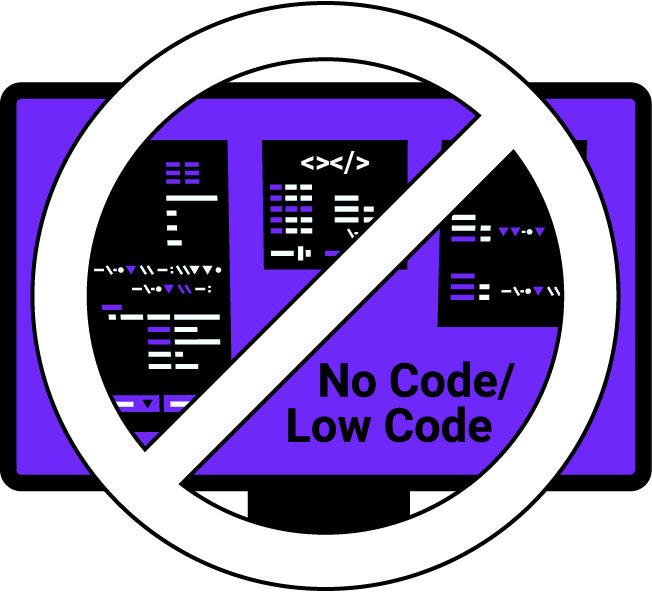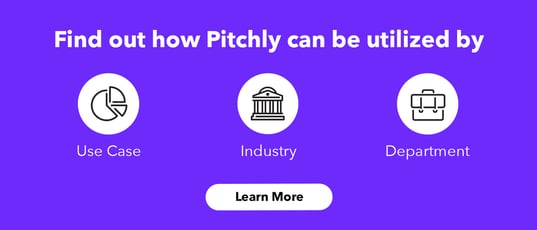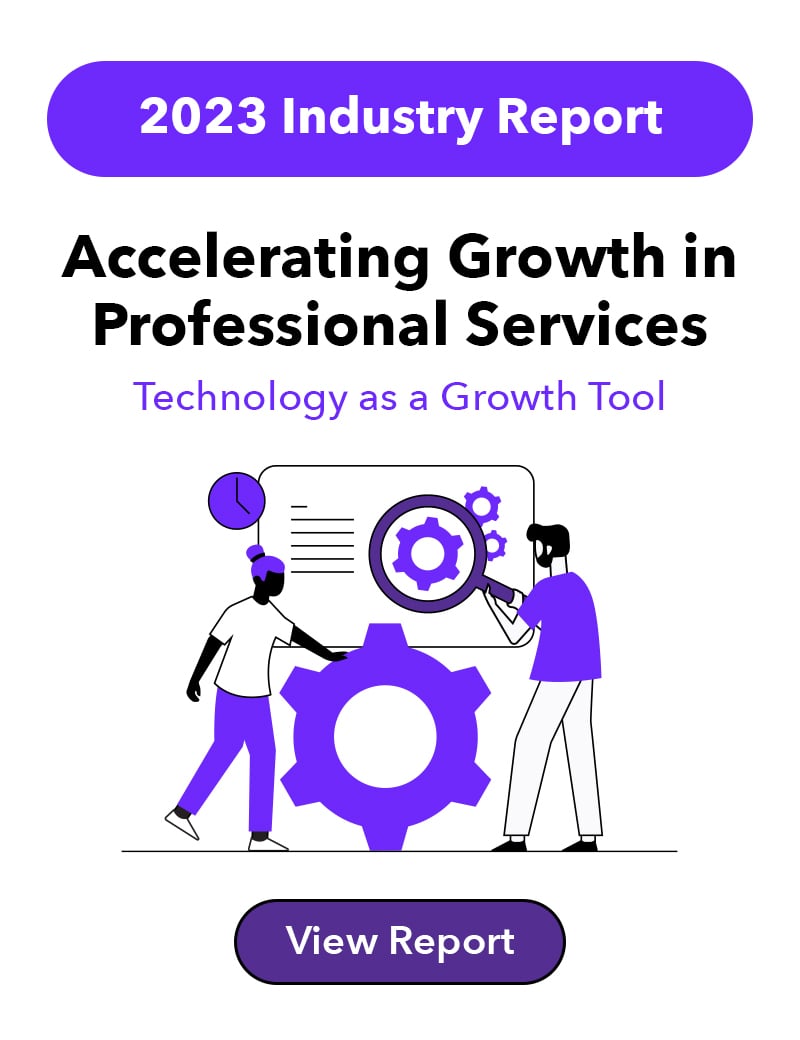If your firm isn’t using no-code solutions to automate your processes right now, you’ll likely be doing so in the near future.
Low and no-code platforms have emerged rapidly in the past few years. According to Gartner, the worldwide market for low-code tools has grown by double digits every year since the pandemic. And they predict that by 2024, 75% of large enterprises will be using at least four low-code tools.
The increased usage of no-code solutions and low-code tools makes sense considering all the practical applications they bring to the workplace.
Enterprises will be using at least four low-code or no-code tools by 2024
What are Low-Code/No-Code Solutions?
Low-code and no-code applications are popular alternatives to traditional software development.
Low-code software offers a simple, more accessible way for nontechnical users to build applications without requiring extensive coding, according to Microsoft. And no-code solutions allow non-developers to take an existing concept to production quickly, with minimal time and resources, and no technical skillset or coding ability required.
These user-friendly solutions appeal to both experienced and novice developers alike, because they can quickly and easily create applications.
Low-code tools reduce the cost and time that are typically required for software development, empowering experienced developers to create more efficiencies and novice developers or non-developers to get a helping hand in creating the tools or processes they need.
If you use no-code software, the need for developers on a project can at times be completely bypassed, meaning almost anyone at your firm can build apps that fit your current workflows.
It's important to note that not all no-code/low-code tools are accepted by all enterprises. While many tools are made with the positive intention of democratizing access to technology, some organizations require more guardrails in order to avoid pitfalls of this democratization, helping them remain compliant and prevent uncontrolled data silos from forming across the organization. Depending on the tool chosen, a no-code/low-code tool can either be a blessing or a curse.
This is all to say that these tools should be selected and integrated into your organization's processes very intentionally and based on your specific needs and considerations in order to unlock the full value.
Using No-Code Solutions to Save Time
The list of options for using no-code applications is long. But one of the most popular cases for the use of low-code or no-code tools is in back-office process automation; think IT, HR, finance and marketing.
The biggest benefits of using no-code solutions are their ease of use and that they help firms deliver on the needs of their clients and other departments more quickly and accurately. Meaning, through automation via no-code and low-code solutions, your staff doesn’t waste their time with mundane, repetitive tasks and the work is consistent and accurate.
Some back-office processes that are commonly optimized with no or low-code tools are:
- Accounts payable
- Account receivable
- Employee onboarding
- Service desk
- Data management - both for employee and client data
These solutions have caused a massive shift in responsibility within firms. Instead of many front-office workers driving these processes in isolation, they're moved to the back-office, where they're configured and controlled by a limited set of hands and supported by technology. Not only does this boost efficiency, but it also leads to more consistency and accuracy.
Pitchly: A No-Code Case Study
I mentioned above how data management is a common candidate for low-code or no-code tools. Let's look at an example of how a tool may look in practice.
Pitchly's Data Enablement Platform helps teams create efficiencies both in their data and content processes, driving meaningful changes that would otherwise require code to bring to life.
Pitchly creates a centralized and sophisticated database that helps to eliminate data siloes and boost the reliability of your data quality. Within this database, you can filter, sort, search and hide information without having to write SQL queries. This is a major step forward when compared to traditional relational databases, where team members would need to approach the IT team to write this query.
With Pitchly, we empower any team member to directly identify and update information in an intuitive, human-friendly way without needing to involve IT, which is often the biggest roadblock to timeliness.
Put your data to work with Pitchly
An added level of data security is an important benefit with Pitchly's platform, and it’s a top priority for firms to accept a low-code or no-code solution, making the difference between a solution that's effective, and one that's more hassle than it's worth.
Choosing a solution that opens access to technology to all members of an organization is only great if the data remains secure. Pitchly allows teams across the entire organization to access the data and automation they need, but the platform still gives IT and leadership the visibility and control over things being built, ensuring that governance is not sacrificed in pursuit of efficiency.
What’s Next for No Code?
The true potential of low-code and no-code tools will be unlocked by combining them with AI tools to double down on efficiency and accuracy.
For example, if you've been online at all in the past several months, you've probably heard of ChatGPT, the most talked-about AI tool on the market right now. If firms aren't already considering harnessing the power of ChatGPT, they will be soon.
While you can use this technology to power a chatbot on your website, helping your visitors self-serve by providing them with relevant answers to their questions, the true crux of this tool's value is how it can add an extra layer of ease in making the most out of your no-code tools.
Here are some examples of the best way to combine these tools:
- Help you write code, making it even easier for non-coders to use low-code platforms.
- Enhance and normalize the client data you already have.
- Interact with clients via written word and translate their intent into queries.
- Perform field mapping automatically when creating integrations with other software.
The possibilities with AI are nearly endless, and since the technology is still relatively fresh, these possibilities will only continue to expand and develop. And it will only add to the tool belt of things no-code/low-code software can do going forward.
If you’re not sure how a low-code or no-code solution could help your firm, you’ll likely soon find out. The opportunities for this type of software are vast. Firms just need to be sure whichever solution they choose, they don’t sacrifice data governance, compliance or security.
A trusted partner like Pitchly can help guide you on which solutions will work best for your firm and how your data will remain safe.
 Apr 20, 2023
Apr 20, 2023





